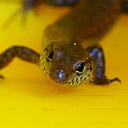Member-only story
Out of the Blue: the Cyanotypes of Anna Atkins
A pioneer in photography and marine biology
The difficulty of making accurate drawings of objects as minute as many of the algae and Confervae, has induced me to avail myself of Sir John Herschel’s beautiful process of Cyanotype, to obtain impressions of the plants themselves, which I have much pleasure in offering to my botanical friends.
Anna Atkins’ introduction to Photographs of British Algae (1843)
John Hershel invented the cyanotype photographic process in 1842. The principle was simple: when combined in solution, ferric ammonium citrate and potassium ferricyanide are sensitive to ultraviolet light. Even the UV in weak sunlight is sufficient to trigger the reaction that turns the exposed mixture into a deep azure known as Prussian blue. Herschel had intended cyanotypes — blueprints — to be a quick and easy way of copying his research notes, but Anna Atkins saw their wider potential. She went to work on a project that employed Herschel’s new process to combine art and science. The following year, she published a volume of cyanotypes of British seaweed. Her book was the first to use photographic illustrations.
Anna was born in Kent in 1799, the only child of Hester and John George Children. Her father was an inventor and scientist with wide-ranging…
